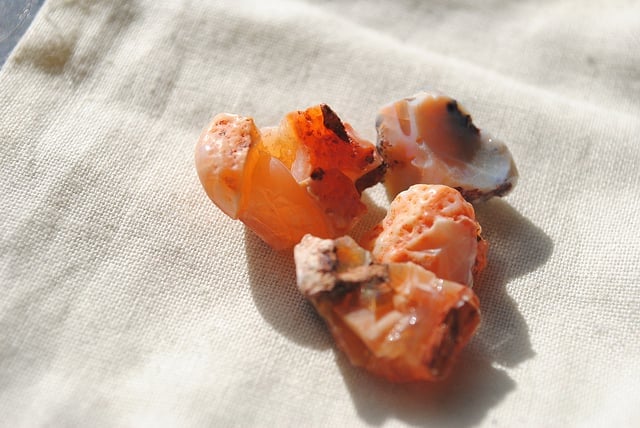How to Dry Opals Safely
Opals should be handled with care. If you buy opals that have been kept in water, follow these instructions to dry them safely.
1 Minute Read
Answer: Opals are very sensitive to sudden changes in temperature. If you purchase opals that have been stored in water, you'll need to dry them slowly.
Opals Have a High Water Content
Before you take your opals to a gem cutter or jewelry maker, you'll have to dry them carefully and slowly. Opals do have significant water content (sometimes as high as 21%). If they dry too quickly they may indeed crack. This is also known as "crazing." That's why they're sometimes kept in water until they can be sold. It relieves the merchant of the responsibility. This is also a way to hide flaws.
Interested in this topic?
This article is also a part of our Opal Specialist Mini Course, in the unit Introduction to Opals and Their Properties.
Buying opals kept in water is not recommended.
Take the opals out of the bottle but don't dry them. Put them in a zip lock bag and then put that somewhere that isn't too hot. Leave them there for six months to a year before taking them to a lapidary or jeweler.
When you store your finished stones, keep them away from sources of heat or cold and store them in soft, moist cotton. It's not necessary to store them in water, oil, or glycerin. Your opals will be fine as long as you don't subject them to sudden changes in temperature or rough handling. You can consult our opal care guide for more information.
Donald Clark, CSM IMG
Silicone Treatments
Silicone isn't normally injected into stones. However, people can smear it onto stones and then place them in a vacuum bowl. The vacuum will suck the silicone into the cracks. Although this is a simple enhancement, let a professional conduct it on stones that have already been cut and polished.
Gerald Wykoff, CSM GG
International Gem Society
Related Articles
Opal Stones and Gems: Value, Price, and Jewelry Information
Appraising Opals
Opal Simulants: How to Spot Imitation Opal
Pricing Information For Star Opals From Spencer, Idaho
Latest Articles
Quartz Toxicity: Understanding the Risks for Jewelers and Wearers
Synthetic Amethyst: What is it and How is it Made?
Hambergite Value, Price, and Jewelry Information
Pearl Simulants: How to Spot Faux Pearls
Never Stop Learning
When you join the IGS community, you get trusted diamond & gemstone information when you need it.
Get Gemology Insights
Get started with the International Gem Society’s free guide to gemstone identification. Join our weekly newsletter & get a free copy of the Gem ID Checklist!
